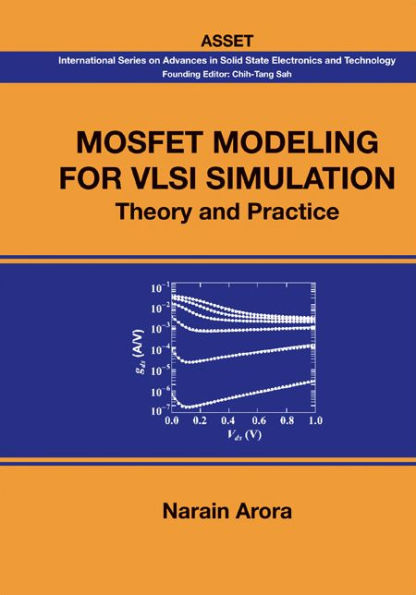A reprint of the classic text, this book popularized compact modeling of electronic and semiconductor devices and components for college and graduate-school classrooms, and manufacturing engineering, over a decade ago. The first comprehensive book on MOS transistor compact modeling, it was the most cited among similar books in the area and remains the most frequently cited today. The coverage is device-physics based and continues to be relevant to the latest advances in MOS transistor modeling. This is also the only book that discusses in detail how to measure device model parameters required for circuit simulations.The book deals with the MOS Field Effect Transistor (MOSFET) models that are derived from basic semiconductor theory. Various models are developed, ranging from simple to more sophisticated models that take into account new physical effects observed in submicron transistors used in today's (1993) MOS VLSI technology. The assumptions used to arrive at the models are emphasized so that the accuracy of the models in describing the device characteristics are clearly understood. Due to the importance of designing reliable circuits, device reliability models are also covered. Understanding these models is essential when designing circuits for state-of-the-art MOS ICs.
"1101220430"
MOSFET MODELING FOR VLSI SIMULATION: Theory and Practice
A reprint of the classic text, this book popularized compact modeling of electronic and semiconductor devices and components for college and graduate-school classrooms, and manufacturing engineering, over a decade ago. The first comprehensive book on MOS transistor compact modeling, it was the most cited among similar books in the area and remains the most frequently cited today. The coverage is device-physics based and continues to be relevant to the latest advances in MOS transistor modeling. This is also the only book that discusses in detail how to measure device model parameters required for circuit simulations.The book deals with the MOS Field Effect Transistor (MOSFET) models that are derived from basic semiconductor theory. Various models are developed, ranging from simple to more sophisticated models that take into account new physical effects observed in submicron transistors used in today's (1993) MOS VLSI technology. The assumptions used to arrive at the models are emphasized so that the accuracy of the models in describing the device characteristics are clearly understood. Due to the importance of designing reliable circuits, device reliability models are also covered. Understanding these models is essential when designing circuits for state-of-the-art MOS ICs.
40.99
In Stock
5
1

MOSFET MODELING FOR VLSI SIMULATION: Theory and Practice
632
MOSFET MODELING FOR VLSI SIMULATION: Theory and Practice
632eBook
$40.99
$54.00
Save 24%
Current price is $40.99, Original price is $54. You Save 24%.
Related collections and offers
40.99
In Stock

Product Details
| ISBN-13: | 9789814365499 |
|---|---|
| Publisher: | World Scientific Publishing Company, Incorporated |
| Publication date: | 02/14/2007 |
| Series: | INT'AL SERIES ON ADV IN SOLID STATE ELEC & TECH , #1 |
| Sold by: | Barnes & Noble |
| Format: | eBook |
| Pages: | 632 |
| File size: | 19 MB |
| Note: | This product may take a few minutes to download. |
From the B&N Reads Blog
